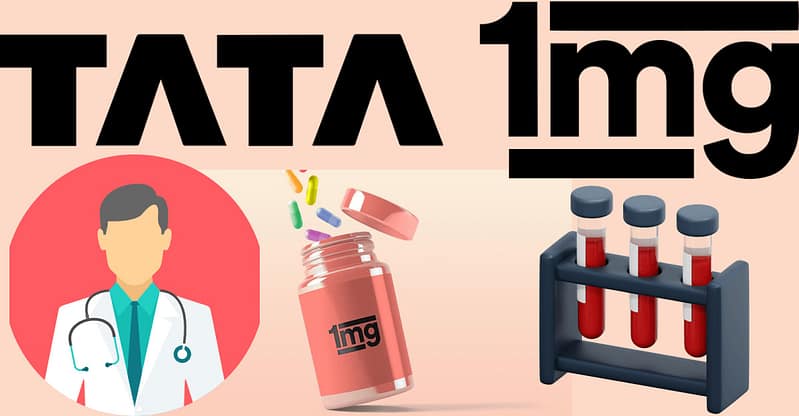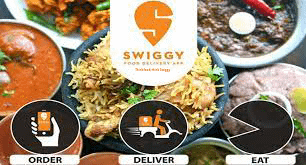We’ve heard numerous stories of religious persecution around the world, often perpetrated by majority religions. However, in India, the situation is reversed: despite being the majority, Hindus have faced violence from Islamic extremists.
Unfortunately, their suffering is often overlooked, partly because they are the majority and partly due to political motivations-politicians find it easier to gain support by appealing to minority groups.
Historically, Hindus have also endured violence on their own soil, which should not be forgotten. With this context in mind, let’s examine some notable massacres that occurred in August since time.
Moplah Massacre Of Hindus In Kerala – 20 August 1921
The Moplah Rebellion, which began on 20 August 1921, is often referred to as the first jihad against Hindus in India. This date is marked as a black day in the history of Kerala. The massacre, which initially started as an uprising against British rule after the fall of Caliphate, took on a communal dimension. During the unrest, Moplah Muslims killed thousands of Hindus, raped Hindu women, and forcibly converted many Hindus to Islam. The Moplah Massacre of Hindus remains a contentious topic in Kerala, particularly among political parties.
It coincided with the Khilafat Movement, which aimed to restore the Ottoman Caliphate after Turkey’s defeat in World War I. The British had deposed the Caliph, angering Muslims worldwide. The Khilafat Movement, supported by prominent figures like Abul Kalam Azad, Zafar Ali Khan, and Mohammad Ali, sought to reinstate the Caliphate. Mahatma Gandhi supported this movement, hoping to unite Hindus and Muslims against British rule.
In Kerala, Moplah Muslims, who were mainly small farmers and traders, were influenced by radical clerics. They worked as sharecroppers or tenants for upper-caste Hindu landlords who controlled land and businesses. Initially targeting the British, the rebellion shifted focus to the Hindu landlords. This, driven by grievances over low wages and poor working conditions, escalated into violence against upper-caste Hindus.
The Moplah Massacre of Hindus saw severe violence, including the burning of police stations and looting of government treasuries. The violence extended to attacking wealthy Hindus, resulting in numerous deaths and widespread suffering. Thousands of Hindus were killed, women were raped, and many were coerced into converting to Islam. In response, the Arya Samaj initiated a purification movement to reconvert these individuals back to Hinduism, and its leader, Swami Shraddhanand, was assassinated in December 1926.
Ultimately, the Moplah Massacre of Hindus failed due to its communal turn and the ensuing violence. The legacy of the rebellion continues to be a point of contention, with ongoing blame directed at the Muslim community for the events.
Calcutta Riots In West Bengal – 16 August 1946
The Calcutta Riots of 1946, often referred to as the “Great Calcutta Killing,” were a series of intense and violent confrontations between Hindus and Muslims in Calcutta (now Kolkata), Bengal, from 16 to 19 August, 1946. This tragic episode is among the most notorious massacres of the 1946-47 period, with estimates suggesting between 5,000 and 10,000 people were killed and around 15,000 were injured. The events remain deeply controversial, with various perspectives from Britain, India, Pakistan, and Bangladesh offering differing accounts and assigning blame.
These riots erupted amid growing tensions between the Congress Party, which primarily represented Hindus, and the Muslim League, which advocated for the interests of Muslims. As India approached independence, a transition announced by British Prime Minister Clement Attlee in March 1946, the two groups had divergent visions for the country’s future. The Muslim League, which had been pushing for the creation of Pakistan since 1940, rejected a British proposal for an interim government in May 1946 and declared 16 August as “Direct Action Day.” This decision led to widespread violence.
In Bengal, the situation was particularly complex. Muslims constituted a majority (54%) in the province, with a significant concentration in Eastern Bengal (now Bangladesh). The province was governed by a Muslim League administration led by Chief Minister Hussain Suhrawardy, a highly contentious figure. Calcutta, with its Hindu majority (73%) and a substantial Muslim minority (23%), became the epicenter of the violence. The Hindu Marwari community, which dominated the city’s economy, contrasted sharply with the largely impoverished Muslim population.
The question of who was responsible for the violence remains hotly debated. Accusations have been directed at the Muslim League, and particularly Suhrawardy, for allegedly inciting the violence. Controversy surrounds Suhrawardy’s role, including his presence in the Police Control Room and his supposed encouragement of the Muslim League crowds. Governor Burrows also faces criticism for his perceived failure to act decisively; however, he contends that any intervention might have triggered a broader political crisis and that he took action as soon as possible. The exact number of casualties remains uncertain, but the violence was exceptionally brutal, involving mutilation and rape. The majority of the victims were poor Muslims, underscoring the socio-economic disparities. Both communities suffered from the violence, which also included casualties from police and military actions.
Reliable accounts of the events are limited. An official inquiry led by Sir Patrick Spens was established but never published its findings. The Great Calcutta Killing remains a poignant memory for those who lived through it, yet it is notably absent from official historical narratives in India and Bangladesh. This omission is partially due to political considerations and a focus on nation-building in the aftermath of independence. While the event began to receive renewed scholarly attention in the 1990s, it continues to be a relatively marginal episode in the broader history of Bengal.
Jagdev Kalan massacre in Punjab – 06 August 1987
The 1987 Jagdev Kalan massacre took place amid the turmoil of the Khalistan separatist movement in Punjab, India. Sikh militants executed 12 individuals, coercing them to chant “Long Live the Sikh Nation.” This violent episode was part of a broader conflict that resulted in the loss of thousands of lives in the struggle for an independent Sikh state.
Kishtwar Massacre (1) In Jammu & Kashmir – 14 August 1993
The 1993 Kishtwar massacre occurred on 14 August 1993, when Muslim militants targeted 16 to 17 Hindu bus passengers in the Sarthal area of Kishtwar district, part of the former state of Jammu and Kashmir in India. This event marked the beginning of a series of communally driven attacks against Hindu civilians during the insurgency in the region.
On that day, three militants armed with AK-47s hijacked a local bus. After forcing women and children off the bus, they took the remaining male passengers to a meadow and separated them into two groups. The militants then opened fire, killing 14 individuals on the spot and two more later in a local hospital.
In the aftermath, the imam of a Kishtwar mosque condemned the killings and called for a strike to curb potential inter-community violence in a town with a mixed Hindu and Muslim population. The attack was denounced by groups such as the JKLF and Hizbul Mujahideen, and a curfew was imposed across the Jammu region. The massacre led to some Hindus fleeing the area and marked the spread of insurgent violence from the Kashmir Valley into the Jammu region. Political reactions included protests and rallies, and local militias known as Village Defence Committees (VDCs) were established to prevent further migrations similar to those of Kashmiri Hindus from the Kashmir Valley. Indian intelligence agencies have alleged that Pakistani militant Muhammad Sajjad Khan, also known as Sajjad Afghani, orchestrated the massacre. As of 2023, no one has been tried or convicted for this attack.
Kishtwar Massacre (2) In Jammu & Kashmir – 3 August 2001
The 2001 Kishtwar massacre – 2 occurred on 3 August 2001, when Lashkar-e-Taiba militants killed 17 Hindu villagers in the village of Ladder, near Kishtwar in the Doda District of Jammu and Kashmir. A group of 10 militants targeted the village, forcibly removing 20 Hindu men from their homes. They were taken to a nearby rocky area where they were shot. Additionally, five villagers were injured in the assault.
The massacre was a major topic of discussion in the Indian parliament, with opposition parties criticizing the government’s response. Three days later, security forces killed Lashkar-e-Taiba terrorist Mujib-ur-Rahman, who had noted in his logbook, dated 3rd August, “The warriors of the Lashkar-e-Taiba have killed 19 unbelievers. This is our challenge to the Indian government.” In response to the killings, Jammu observed a complete bandh the following day. Protesters in Jammu, Kathua, and Udhampur burned Pakistani flags and effigies of General Pervez Musharraf as part of their demonstrations against the massacre.
Chamba Massacre In Himachal Pradesh – 3 August 1998
The 1998 Chamba massacre occurred on 3 August 1998, when Hizbul Mujahideen militants killed 35 Hindus in the Chamba district of Himachal Pradesh, India. The attack was carried out by Pakistan-trained terrorists who targeted mainly laborers. The violence unfolded in two separate incidents: one in the Kalaban area, where 26 people were killed and eight were injured, and another in Satrundi, where five were killed and three were wounded.
The massacre came to light when two injured survivors from Kalaban, Dhian Singh and Beli Ram, managed to walk eight kilometers through dense forests to report the incident to the nearest Mansa police station. The killings led to tensions between Muslim Gujjars and Hindu Gaddis.
In the aftermath, top Hizbul Mujahideen operative Billu Gujjar was apprehended by Punjab Police in Pathankot a few days later in connection with the massacre.
Amarnath Pilgrimage Massacre In Jammu & Kashmir – 01 August 2000
The Amarnath pilgrimage attack, which occurred on 1st and 2nd August 2000 , resulted in the deaths of at least 89 to 105 people and injuries to at least 62 others. This series of coordinated assaults by Islamist militants took place in Anantnag and Doda districts of Indian-administered Kashmir.
On 2 August, 32 people were killed in a massacre at the Nunwan base camp in Pahalgam. The victims included 21 Hindu pilgrims, 7 local Muslim shopkeepers, and 3 security personnel, with 7 others injured. The total number of fatalities across the attacks ranged from 89, according to official counts, to 105 as reported by PTI.
The attacks also targeted various locations on 2 August that year, including:
Mirbazar-Qazigund and Sandoo-Acchabal in Anantnag district, where at least 27 migrant laborers from Uttar Pradesh, Bihar, and Madhya Pradesh were killed.
A remote village in Doda district, where at least 11 unarmed civilians were killed in a pre-dawn attack.
A village in Kupwara, where terrorists killed 7 unarmed civilians, including members of a family related to a surrendered former militant.
Kayar village in Doda district, where 8 unarmed civilians were killed and 2 more were injured in an ambush on a Village Defence Committee patrol.
Following the attacks, then-Prime Minister Atal Bihari Vajpayee accused Pakistan of attempting to undermine democracy in Jammu and Kashmir.
Muzaffarnagar Riots In Uttar Pradesh – 27 August 2013
The Muzaffarnagar riots of 2013, which erupted in the Muzaffarnagar district of Uttar Pradesh, India, resulted in significant violence between the Jat and Muslim communities. The clashes led to the deaths of at least 93 people, displaced over 50,000 individuals, and injured more than 50 people. By 17 September, the curfew was lifted across the affected areas, and the army was withdrawn.
Described as “the worst violence in Uttar Pradesh in recent history,” these riots prompted the deployment of the army in the state for the first time in two decades. The Supreme Court of India, reviewing the situation, found the Akhilesh Yadav-led Samajwadi Party prima facie negligent in preventing the violence and instructed immediate arrests of all accused, regardless of their political affiliations. The Court also criticized the Central government for its failure to provide timely intelligence to the Samajwadi Party administration.
On 21 August 2013, communal clashes broke out in Muzaffarnagar, leading to police cases against 150 individuals and the arrest of 14. The conflict between the Jat and Muslim communities escalated by 27 August that year. The origins of the riots when a woman from the Jat community was sexually harassed by Shahnawaz Qureshi. In retaliation, the woman’s brothers, Sachin and Gaurav, murdered Shahnawaz on 27 August 2013. The next day, Shahnawaz’s brothers ensuing violence led to the deaths of two brothers, Sachin and Gaurav Singh, who were lynched by a Muslim mob. Following the killings, both communities began attacking each other. Despite the police’s intervention, the violence continued, leading to further clashes and numerous casualties.
On 7 September, the situation worsened with the Jauli Canal incident, where a large group of Hindus returning from a Panchayat meeting were ambushed by a Muslim mob, leading to numerous casualties. Reports suggested that many bodies were dumped into the canal, though the exact number of deaths remains unclear.
Despite a curfew and military deployment, violence continued for several days, with casualties rising to 43 by 12 September. The violence included cases of sexual assault, with 13 rape cases reported and 111 individuals named in these incidents by mid-November 2013, though no arrests had been made at that time.
A Mahapanchayat held in Sardhana on 29 September turned violent, leading to further unrest. On 30 October, additional clashes occurred, resulting in more casualties and prompting increased police and military presence.
Approximately 1,000 troops were deployed, with additional forces from the Provincial Armed Constabulary (PAC), Central Reserve Police Force (CRPF), and Rapid Action Force (RAF). The police made around 10,000 to 12,000 preventive arrests, seized 2,000 arms, and canceled 2,300 arms licenses.
By 31 August, five FIRs had been registered, and eleven individuals were arrested, including political leaders accused of inciting violence. The Uttar Pradesh government announced a judicial commission led by retired Justice Vishnu Sahay to investigate the violence, and several senior officials were removed for their inadequate handling of the situation.




















